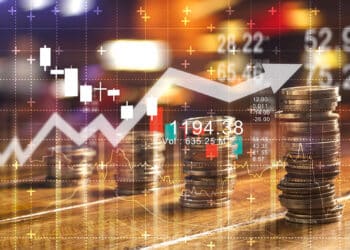In a position paper released this week, the Future Fund said it is shifting gears to prioritise portfolio resilience, aiming to safeguard its $261 billion portfolio against rising inflation and prolonged geopolitical tensions.
According to the fund, its updated strategy includes increasing gold exposure, hiring active fund managers, and avoiding fixed-rate bonds.
It follows the fund reaching $261 billion in the September quarter, meaning its $60.5 billion initial endowment in 2006 from the privatisation of Telstra has grown by $200 billion over the last two decades.
Over the past three years, the fund has delivered an annualised return of 10.6 per cent, outperforming its 7.6 per cent target, while returning 8 per cent per year since its inception in May 2006, ahead of its 7 per cent benchmark.
While returns have been strong over this period, the fund noted that rising social and geopolitical tensions may make achieving similar returns more challenging going forward, necessitating a shift in strategy which it has been working on for some time.
“With the increasing risk of more frequent and more intense novel shocks likely to occur across global economies, and social and environmental systems, a focus on resilience ensures our investment portfolio remains aligned with our long-term investment goals,” the report stated.
Zeroing in on inflation as a key concern for the fund and a driver behind its push for greater portfolio resilience, the paper identified three types: demand-driven, supply-driven, and monetary.
As the paper explained, each of which have affected asset prices differently, leaving no guaranteed way to shield the portfolio. Crucially, when prices surged – typically above 5 per cent – investors had few safe havens.
To navigate these challenges, the sovereign wealth giant has pinpointed several key asset classes it has already leaned into – and plans to deepen its exposure to in the period ahead.
It pointed to its move to return to active equity managers, believing they will be “better rewarded in a climate of higher inflation and geopolitical risk, where market/beta returns are less predictable.”
Future Fund chief executive, Rachael Arndt, previously noted that although the fund once believed it was “nigh on impossible” for active equity managers to consistently outperform after fees, shifting market conditions led them to revise this view some time ago.
In the current environment, Arndt emphasised that resilience is more important than simply chasing alpha.
The fund also highlighted its allocations to active mandates in Australian small-cap and Japanese equities, adding that its focus is on so-called “quality” stocks with pricing power.
Meanwhile, the fund said it favoured the Australian dollar, seeing it as an effective inflation hedge thanks to its commodity links. Additionally, Future Fund flagged a significant increase in its gold exposure as a key shift, positioning the metal as an important hedge against inflation.
Infrastructure assets, which tend to maintain value during inflationary periods due to inflation-linked cash flows, have also been added to the portfolio since May 2021.
The fund further increased its exposure to Australian infrastructure and housing in the last quarter, including stakes in Transgrid, CDC data centres, student housing, and retirement land lease developments.
It also stated that it is reducing its exposure to nominal fixed-rate bonds, arguing that traditional negative equity-bond correlations weaken during high inflation.
However, it clarified that it is owning some nominal government bond exposure, aiming to “strike a balance that reduces vulnerability to both stagflationary and deflationary outcomes.”
The paper adds to a series of releases since September 2021 that have driven a broad reassessment of the fund’s investment outlook, highlighting expectations of higher inflation and rising geopolitical tension.
Looking ahead, the fund said it will publish additional instalments throughout 2026, exploring further themes tied to portfolio resilience, including artificial intelligence (AI) and technology, currency risk, and the energy transition.







